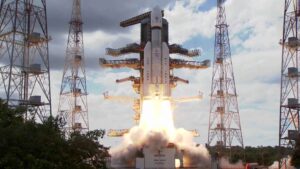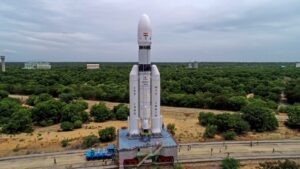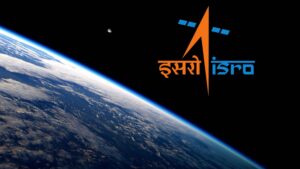India has proved the world proud with its great achievement in space science. Our country initiated its space journey long ago with fewer resources. But now, India is one of the leading nations in the world in the field of space exploration. The Indian Space Research Organisation, or ISRO for short, is the primary space agency that coordinates all the space missions of our country. It has achieved many objectives that seemed impossible by working hard, using intelligent thoughts, and low-cost strategies.
This blog will inform you about India’s significant space missions in very simple words. It is ideal for school children and readers who would like to learn about space but do not wish to read difficult science.
The Dawn of India’s Space Age
India began its space journey in 1969 with ISRO. India had very simple equipment and tiny rockets initially. The first satellite India launched was Aryabhata in 1975. This was only the beginning. Gradually, India developed its own satellites, launched them on Indian rockets, and even assisted other nations by launching their satellites.
Chandrayaan Missions – India’s Moon Missions

India’s journey to the Moon began with the Chandrayaan-1 mission in 2008. This was India’s first mission to explore the Moon. The biggest achievement of Chandrayaan-1 was discovering water molecules on the Moon’s surface. This discovery was very important for scientists around the world.
In 2019, India launched Chandrayaan-2. This mission had three parts: an orbiter, a lander, and a rover. The orbiter is still working and sends pictures and data from the Moon. Although the lander did not land as planned, the mission gave us a lot of useful information.
India made history again in 2023 with Chandrayaan-3. It was a big success. India became the first country to land near the Moon’s south pole. This area is important because it may have water ice, which is useful for future human missions. This mission made India the fourth country in the world to make a successful soft landing on the Moon.
Mangalyaan – India’s Mission to Mars
You may also like: “Mars: The Red Planet’s Formation, and Possibility of Life”
India’s mission to Mars is known as Mangalyaan or the Mars Orbiter Mission. It was sent in 2013 and arrived on Mars in 2014. It was a very unique mission for numerous reasons. Firstly, India was the first Asian nation to reach Mars. Secondly, it was accomplished in the maiden attempt, which none other had ever attempted before. Thirdly, it was the most affordable Mars mission in the world. This demonstrated that great things can be achieved by India even on a tight budget.
Aditya-L1 – Studying the Sun
India first sent a mission to observe the Sun in 2023 with the name of Aditya-L1. The mission will teach us about the outer region of the Sun and solar storms. Solar storms can impact the satellites and energy systems on the Earth. Spacecraft has gone to its destination in space and is now examining the Sun. This makes it easier for us to prepare better against any trouble brought by radiation from the Sun.
Gaganyaan – India’s Human Space Mission
India is getting ready to take human beings into space. The mission has been named Gaganyaan. It would be India’s first manned space mission. ISRO has chosen the astronauts and is training them. They are also testing the spacecraft as well as safety systems. The target is to send Indian astronauts into space by the end of the current decade. This will be a very proud moment for the entire country.
SpaDeX and Satellite Docking

India successfully executed a satellite docking experiment known as SpaDeX in 2024. Two satellites were caused to link in space during the mission. It is beneficial for space repair, future space station construction, and even refueling satellites. Only a handful of nations such as the USA, Russia, and China have previously done so. India’s achievement in SpaDeX demonstrates that we are prepared for more complex missions in the future.
NavIC – India’s Own GPS
NavIC is India’s native satellite navigation system. It is similar to the GPS used by many people in their phones. NavIC finds applications in several fields such as travel, warning during disasters, fishing, and defense. ISRO keeps updating this system with more satellites being launched. ISRO launched a new satellite named NVS-02 in 2025 to further improve NavIC and provide more accuracy.
XPoSat – Exploring X-rays in Space
Its next major milestone was in 2024 with the satellite XPoSat, India’s first space-based X-ray observatory. The satellite observes X-rays emitted by stars, black holes, and other astronomical objects. It assists researchers in learning about how these potent objects function. In this way, India joined the list of nations that research deep space through sophisticated equipment.
Astrosat – Exploring Deep into the Universe
India launched its first space observatory, Astrosat, in 2015. Capable of observing space in various wavelengths like visible light, X-rays, and ultraviolet radiation, the observatory has been instrumental in advancing space research. By assisting in the investigation of stars, galaxies, and other celestial bodies, Astrosat also fosters collaboration between Indian and international researchers.
Analog Missions – Earth-Based Training

ISRO also has special training programs known as analog missions. These are conducted in locations on Earth that resemble space environments. For instance, in 2023, Indian scientists conducted a mission in Leh, Ladakh. It assisted them in preparing for upcoming Moon and Mars missions. These programs are helpful to check how astronauts will live and work in space.
What’s Next for India?
India’s space ambitions do not end here. ISRO has large plans ahead of it. Indian Prime Minister made a declaration stating that India would have a space station of its own by the year 2035. India also aspires to send humans to the Moon by the year 2040. These targets are huge, but India proved that everything is possible if hard work is involved.
Conclusion

India’s space journey is an example of hard work, intelligent work, and never losing hope. From sending satellites to stepping on the Moon, India has established itself as a successful player in the space arena. These accomplishments motivate millions of students and scientists to dream big and think big. If you are a student in the best schools in Mohali or the best schools in Kharar, recall that the future of space science is not for someone else; it can include you as well. With good education, the right guidance, and hard work, you might be a part of India’s space future.
Let us felicitate our scientists and let us nurture young minds’ aspirations. India’s space journey has just begun—and the sky is no longer the limit.
Read more important blogs from Anee’s School:








